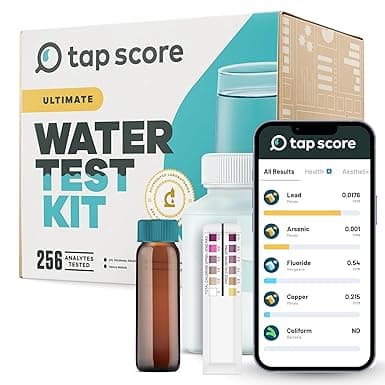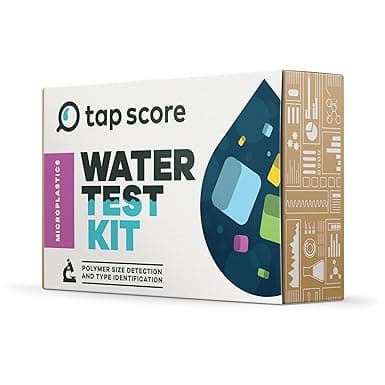Cottonwood Tap Water Quality Report
Cottonwood's water has 5 contaminants above EPA MCLGs. We recommend using a certified water filter.
Utility
COTTONWOOD WATER SYSTEM
People Served
259,157
MCL Violations
0
Last Updated
Feb 6, 2025
Is Cottonwood Tap Water Safe to Drink?
Cottonwood's water has 5 contaminants above EPA health-based guidelines. We strongly recommend using a certified water filter to reduce exposure to these contaminants. Check our filter recommendations below for NSF-certified options that can remove the specific contaminants found in Cottonwood's water.
The data below shows test results from COTTONWOOD WATER SYSTEM, which serves 259,157 people in the Cottonwood area. Water quality testing is conducted regularly and reported to the EPA. This report was last updated Feb 6, 2025.
Cottonwood Water Quality Test Results
Key Water Quality Metrics
Contaminants Detected
⚠️ Contaminants Above EPA MCLG (5)
Lead
What is Lead?
Naturally occurring heavy metal commonly found in tap water
Health Effects
Health protective benchmarks for oral exposure to lead are based on delays in physical or mental development for children and infants, and impacts to the kidneys and high blood pressure for adults. Children are especially susceptible to the effects of lead. Even low levels of lead can damage the brain and nervous system, slow development, and lead to problems with learning, behavior, hearing, and speech. In adults, lead can lead to hypertension, reproductive problems, neurological disorders, decreased kidney function and muscle and joint pain. Exposure to lead can also cause anemia and impact the immune system for both children and adults. The EPA classifies lead as a probable human carcinogen.
Affected Organs
Common Sources
Arsenic
What is Arsenic?
Naturally occurring element that has both inorganic and organic forms
Health Effects
The EPA drinking water standards for arsenic are based on adverse effects to the cardiovascular, pulmonary and liver systems in drinking water with inorganic arsenic, as well as an increased risk of cancer. Long term health effects of total arsenic in drinking water include bladder, GI tract, kidney, liver, lung, pancreas and skin cancer, cardiovascular effects, pulmonary and gastrointestinal effects, ocular, immunological, neurological and reproductive effects. Arsenic found in epidemiological studies include developmental effects, socioeconomic and genotoxicity.
Affected Organs
Common Sources
Uranium
What is Uranium?
Uranium is a weakly radioactive heavy metal found naturally in bedrock and used in nuclear weapons, some ceramics, electron microscopy stains, photography toners, and certain fertilizers. Uranium is weakly radioactive because all of its isotopes (Uranium-234, Uranium-235, and Uranium-238) are unstable. Ninety-nine percent of naturally existing uranium is in the isotope form uranium-238. The EPA has established a maximum contaminant level for uranium in drinking water in response to human and animal studies indicating kidney toxicity and and increased risk of cancer.
Health Effects
Health protective benchmarks for uranium are based on adverse kidney system effects observed in both humans and animals and an increased risk of cancer. Animal studies have also shown female reproductive system and developmental toxicity, as well as genotoxicity, related to uranium exposure.
Affected Organs
Common Sources
Chromium (VI)
What is Chromium (VI)?
Chromium VI, also known as hexavalent chromium, is a toxic form of the element chromium. It is a known carcinogen and can cause various health issues when ingested or inhaled. Chromium VI is often used in industrial processes, such as chrome plating, leather tanning, and wood preservation.
Health Effects
Exposure to chromium VI can lead to serious health problems, including lung cancer, respiratory issues, skin irritation, and damage to the liver and kidneys. Long-term exposure can also affect the immune system and lead to reproductive issues.
Affected Organs
Common Sources
Cadmium
What is Cadmium?
Heavy metal most often found in drinking water due to the corrosion of galvanized pipes. It has a variety of industrial uses, primarily as a component in batteries, pigments, coatings, and electroplating. It also occurs as a natural impurity in phosphate rocks, and is present in certain phosphate fertilizers as a result. Cadmium can accumulate in plants and organisms throughout the food chain from contaminated soil and water. Long-term exposure to excess cadmium may lead to kidney dysfunction, skeletal defects, and multiple types of cancer.
Health Effects
Health protective benchmarks for cadmium in drinking water are based on kidney toxicity and skeletal defects (osteoporosis, increased bone fractures, decreased bone mineral density). In animal studies, cadmium has been shown to cause adverse developmental effects as well.
Affected Organs
Common Sources
Understanding the Data
This data comes from your local water utility testing. The bar charts compare detected levels against EPA's Maximum Contaminant Level Goal (MCLG). Contaminants above the MCLG are shown by default and may require filtration. All other tested contaminants are within safe levels and can be viewed by expanding the section above.
Recommended Water Filters for Cottonwood
Based on Cottonwood's water quality data, these NSF-certified filters are recommended to remove contaminants above EPA MCLGs.

Solventum Purification Inc.
3MRO401
NSF Certified:
Daily Production
11.48 gpd
Removes 15 contaminants:
Arsenic, Barium, Cadmium, Chromium (Total), Chromium (VI) +10 more

Solventum Purification Inc.
3MRO301
NSF Certified:
Daily Production
11.48 gpd
Removes 15 contaminants:
Arsenic, Barium, Cadmium, Chromium (Total), Chromium (VI) +10 more

iSpring Water Systems LLC
RCC7-BLK
NSF Certified:
Daily Production
25.41 gpd
Removes 9 contaminants:
Asbestos, Barium, Cadmium, Chromium (Total), Copper +4 more

iSpring Water Systems LLC
RCC7AK-BLK
NSF Certified:
Daily Production
25.41 gpd
Removes 9 contaminants:
Asbestos, Barium, Cadmium, Chromium (Total), Copper +4 more
Verify Your Water Quality with Independent Testing
With 5 contaminants above EPA health guidelines, independent laboratory testing provides a second opinion and can track changes over time.

SimpleLab
Advanced Home Water Test
$369
Most comprehensive home water test including all standard tests plus additional parameters for ultimate peace of mind.

SimpleLab
Standard Home Water Test
$232
Comprehensive water analysis testing over 200 contaminants including bacteria, heavy metals, and chemical compounds.

Tap Score
Advanced Microplastics Test
$636
Cutting-edge testing for microplastics particles in drinking water using advanced laboratory techniques.
Frequently Asked Questions About Cottonwood Tap Water
Cottonwood's water has 5 contaminants above EPA MCLGs. We strongly recommend using a certified water filter to reduce exposure to these contaminants. Check our filter recommendations below for NSF-certified options that can remove the specific contaminants found in Cottonwood's water.